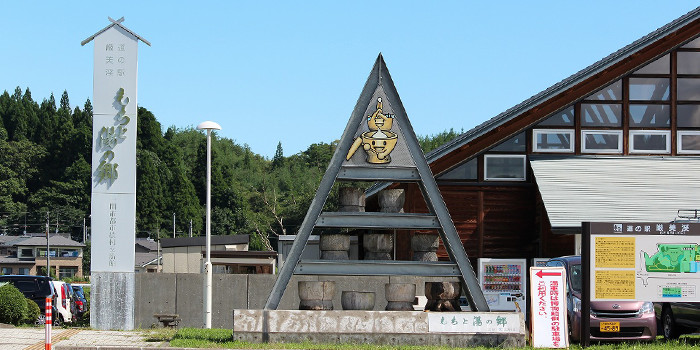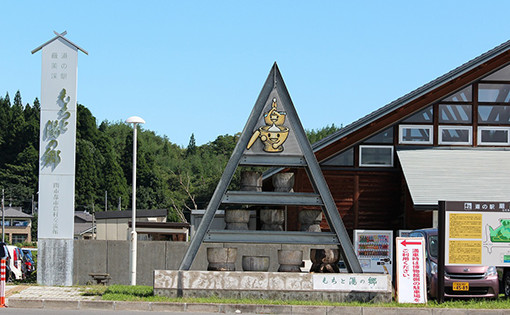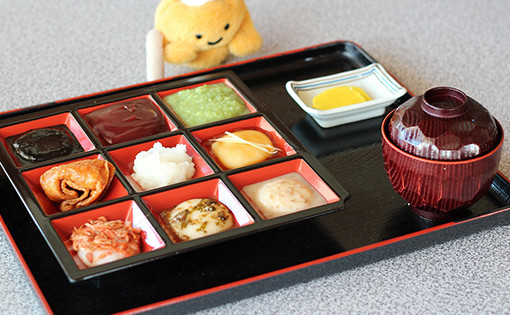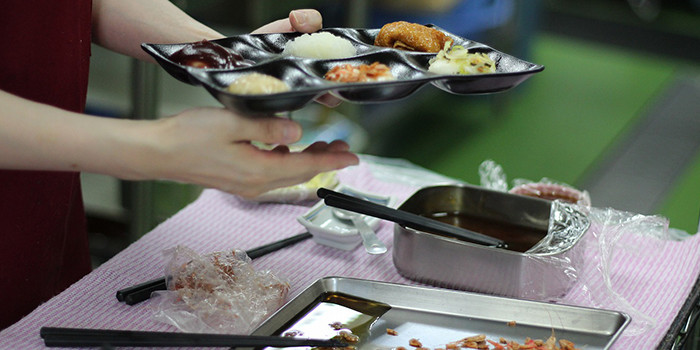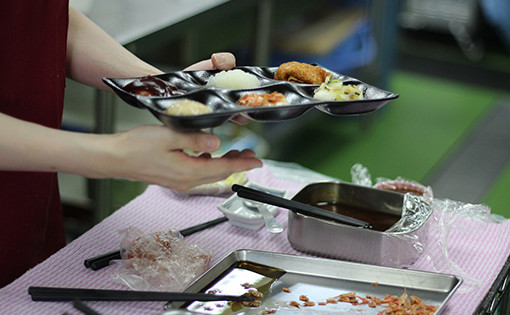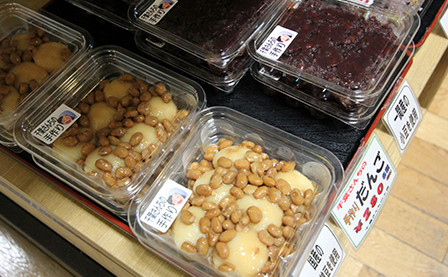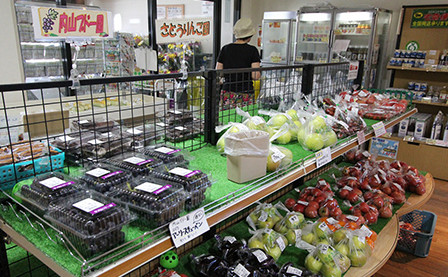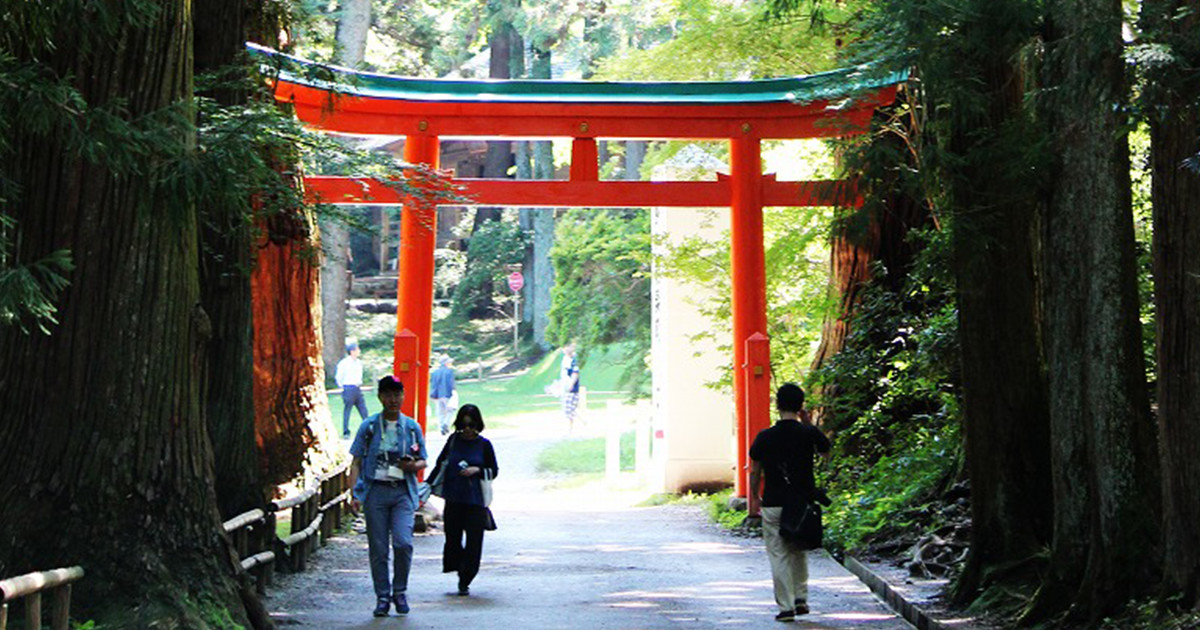World Heritage Sites
& World-Class Mochi
Afterward, I headed for Ichinoseki Station, which is a stop on the Tohoku Shinkansen. Ichinoseki is known as a big mochi town.
Below is the sign for a rest stop on the national highway called Genbikei, a veritable mochi village.
This area harvests a lot of glutinous rice, holds mochi events all year long, and the town is known for welcoming visitors with mochi entertainment and hospitality.
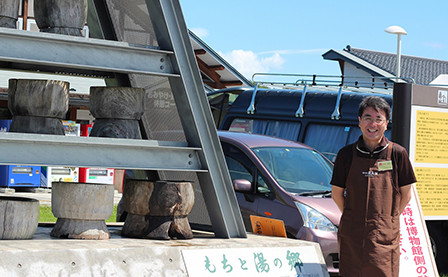
The Genbikei Rest Stop executive director, Mr. Konodera greeted me with a bright smile.
As expected, the hospitality here involved preparing mochi.
The fourth Friday of every month here is all-you-can-eat mochi day, and the event attracted a huge crowd.
There is a variety of mochi culture in Korea as well, but here in Ichinoseki, they take it to a level unlike anywhere else. Konodera informed me that they prepare the mochi to order so they can serve it fresh, and they offer an array of toppings, even during all-you-can-eat.
I ordered the rest stop’s most popular menu item, the “Wafu Mochi Set,” which comes with an assortment of flavors, including grated daikon radish in the center to help with digestion, surrounded by black sesame, red bean paste, mashed soybeans, ginger, and more.

The kitchen also cooks up mochi rice produced in the local area, and I was lucky enough to get a tour.
With the steam rising up, freshly cooked mochi rice is placed into the machine, and the mochi is made by shifting it up and down with a white pole.
The freshly made mochi is combined with a variety of ingredients and sent out to the customers. Even though I have lived in Japan for about 20 years, I tasted several things here for the first time.
I wondered what was so different about the mochi at the Genbikei rest stop. People eat mochi where I live in Saitama Prefecture, but many have it just once a year, roasted around New Year’s.
And karami mochi, topped with grated daikon, was a truly fresh taste for me as a Korean, but this…
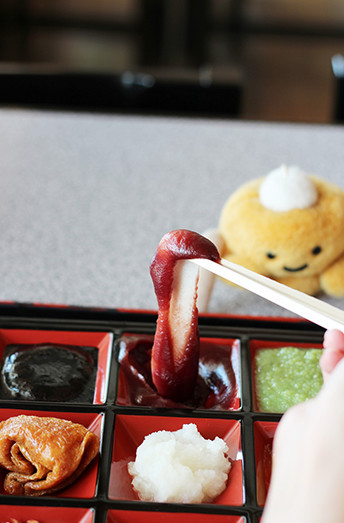
I tried lifting up the soft mochi that was just made in the kitchen. Wow! How far does this stuff stretch?
I was so shocked at how elastic this mochi was, I honestly had to laugh. Normally if it stretches that much, it would just fall off the plate.
According to Konodera, “What makes our mochi so great is that it is soft and sticky, with a chewy texture, but doesn’t stick to your mouth.”
Just thinking about it makes me want to eat it again.
I cut the stretchy mochi and popped in into my mouth. It really was soft and sticky without sticking to my mouth! Its chewy, supple texture totally reminded me of a gummy candy.
Eight types of mochi seemed like quite a lot, but in the blink of eye, I had happily taken them all down.
The most memorable flavor was the mochi topped with Japanese umeboshi (pickled plum) and shiso leaf. I never really liked the flavor of umeboshi before, but I will never forget how delicious this mochi was.
At Genbikei Rest Stop, you can freely purchase grains and vegetables produced right in the village, but the mochi and other foods made from them are most popular with visitors.
It is an extremely fun rest stop that hosts several mochi-centered events lined up every month, just like the mochi they serve.
Genbikei Rest Stop is one place you cannot miss if you are ever around Ichinoseki and Hiraizumi.
